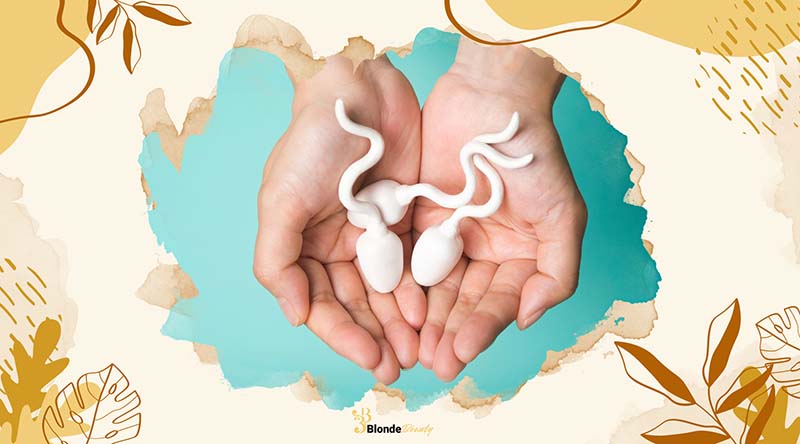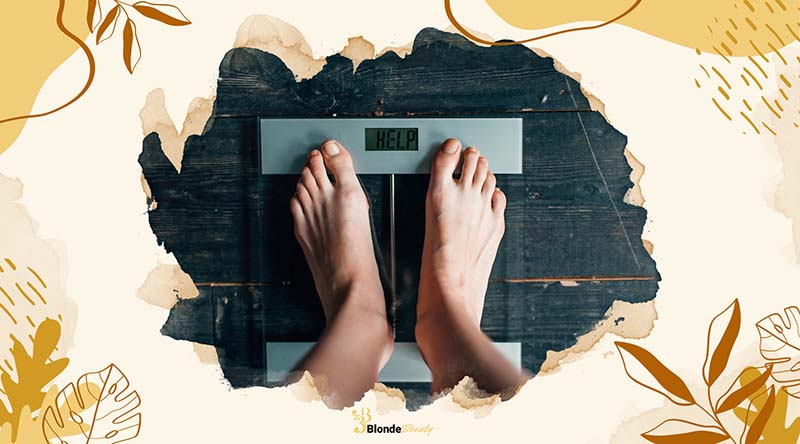A semen analysis is crucial for understanding sperm health, focusing on the main question: “What does unhealthy sperm look like?” This process evaluates essential aspects such as the volume of sperm, their mobility, and their structure.
These factors are critically important for assessing a man’s fertility potential. Various conditions can impair sperm health, hindering a man’s ability to father children.
Indicators of unhealthy sperm, which are vital for tackling fertility issues, include poor movement, insufficient quantity, and unusual appearance. Recognizing these signs is key to addressing any concerns related to fertility.
You should also read the following articles:
- Does Masturbation Cause Low Sperm Count? Unveiling Facts
- Does Semen Retention Boost Testosterone? Fact vs. Myth
- Do Cold Showers Increase Testosterone? The Reality
Different Types of Unhealthy Sperm
There are different types of unhealthy sperm:
- Oligozoospermia: This is when the sperm count is less than 15 million per milliliter.
- Asthenozoospermia: This happens when the sperm’s ability to move (motility) is less than 40%.
- Teratozoospermia: This occurs when the sperm have abnormal shapes, with less than 4% of them being normal.
Understanding these types of unhealthy sperm helps in diagnosing fertility issues accurately.

What Does Unhealthy Sperm Look Like? Signs of Unhealthy Sperm?
Determining whether sperm are healthy involves assessing sperm count, motility, and morphology.
- Sperm Count: A low sperm count, defined as less than 15 million sperm cells per milliliter, may lead to difficulties in impregnating a partner.
- Motility: Healthy sperm should move effectively to reach a woman’s reproductive organs for fertilization. Adequate motility is indicated by at least 40% of sperm showing movement. When less than 40% of sperm are motile, it indicates low sperm motility.
- Morphology: Abnormal sperm morphology can manifest in various ways, such as enlarged heads, irregular shapes of the head and mid-piece, crooked or curved tails, double tails, and double heads. Ideally, healthy sperm have oval-shaped heads and long tails.
Yellowish Sperm Is Good or Bad?
Yellowish sperm can raise concerns, as it might suggest underlying medical issues.
Although yellow semen isn’t always a major problem and can be normal in certain situations due to dietary or lifestyle factors, persistent yellowish sperm—particularly when accompanied by symptoms like pain, itching, or fever—could indicate infections like sexually transmitted diseases (STIs), prostate irregularities, or liver issues.
It’s wise to seek medical advice if you’re worried about the color of your semen, especially if it’s consistently yellow or if other symptoms accompany it. Consulting a doctor can provide clarity and appropriate guidance.

Can I Check If My Sperm Is Healthy at Home?
Yes, you can assess the health of your sperm at home using various at-home testing kits available in the market. These kits can give you information about sperm concentration, motility, and count, which are important factors for determining male fertility.
For example, the YO sperm kit measures sperm concentration and motility, while the SpermCheck kit focuses on sperm count. However, it’s essential to understand that these tests don’t evaluate other critical factors like ejaculate volume or sperm morphology, which also play a significant role in assessing male fertility.
While at-home sperm tests can provide helpful insights, they shouldn’t replace a comprehensive evaluation by a healthcare provider. If you have concerns about your fertility or your partner’s fertility, it’s best to consult a healthcare provider for further assessment and guidance.
Can I Improve Sperm Quality?
Yes, you can take steps to improve sperm quality. Here are some practices that may help prevent the formation of unhealthy sperm:
- Maintain a healthy weight: Research suggests that maintaining a healthy BMI is crucial for producing healthy sperm.

- Exercise regularly: Studies indicate that regular exercise is associated with better sperm quality. However, avoid overexertion, as it can reduce testosterone levels.

- Follow a healthy diet: Incorporate foods rich in Omega-3 fatty acids like fish, seeds, and walnuts. Also, include zinc-rich foods such as nuts, lobster, beans, turkey, and mussels, as zinc can enhance sperm vitality. Avoid processed meats, soy products, high-fat dairy, and trans fats. Adequate levels of vitamins and minerals like folate and vitamin B complex may also improve fertility.

- Quit smoking: Heavy smoking has been linked to low sperm count and DNA damage in sperm.

- Manage stress: Stress can interfere with hormone levels necessary for sperm production. Practice stress management techniques such as healthy eating, regular exercise, and sufficient sleep. Consider consulting a fertility specialist if stress persists.

- Ensure adequate sleep: Getting at least 8 hours of uninterrupted sleep is essential for overall health and reproductive potential.

Incorporating these practices into your lifestyle may help improve sperm quality and increase your chances of impregnating your partner.
Conclusion
In conclusion, understanding “What does unhealthy sperm look like?” is a vital step towards addressing fertility concerns and enhancing your chances of conceiving. Whether it’s recognizing signs of unhealthy sperm such as low motility, insufficient count, or abnormal morphology, or seeking ways to improve sperm quality through lifestyle changes, the journey to improved fertility is within reach.
By maintaining a healthy weight, exercising regularly, adopting a nutritious diet, quitting smoking, managing stress, and ensuring adequate sleep, you can significantly influence your reproductive health. Additionally, the availability of at-home testing kits offers a convenient first step in assessing your sperm health, although it’s crucial to follow up with professional medical advice for a comprehensive evaluation.
For more insightful articles on health and wellness, be sure to explore additional blogs from Blonde Beauty.

Laureate Professor Clare Collins
Professor Clare Collins is a leading expert in nutrition and dietetics at the School of Health Sciences, part of the College of Health, Medicine and Wellbeing. Her work is changing the way we think about food and health. She grew up as one of nine children and was the first in her family to finish high school and go to college. This background gave her a strong work ethic and a deep appreciation for seizing opportunities.
As the Director of the Hunter Medical Research Institute’s Food and Nutrition Program and a recipient of three NHMRC Research Fellowships, Professor Collins is making a big difference in public health. She focuses on helping people who are often overlooked, using new technologies like apps and online programs to improve their nutrition and reduce the risk of chronic diseases.
Professor Collins is well-respected and has been recognized as a Fellow in four major health and science organizations. She leads a diverse team of experts, including dietitians, computer scientists, and engineers, working together on global health projects.
Her achievements are impressive. She has received over $29 million in research funding, published more than 450 papers, and helped 35 PhD and Master’s students complete their degrees. She’s also active in sharing her knowledge with the public. She has developed tools like the Australian Eating Survey and the Healthy Eating Quiz, and she often appears in the media to talk about nutrition.
PUBLISHED ARTICLES
- Collins, C. (2019). “The Effect of a Pilot Dietary Intervention on Pain Outcomes in Patients Attending a Tertiary Pain Service.”
- Collins, C. (2022). “Variation in cardiovascular disease risk factors among older adults.”
- Collins, C. (2022). “Evaluation of an online intervention for improving stroke survivors’ health-related quality of life: A randomised controlled trial.”
These articles show Professor Collins’s commitment to understanding how better nutrition can improve health. Her work is important for researchers, doctors, and anyone interested in healthy living.
